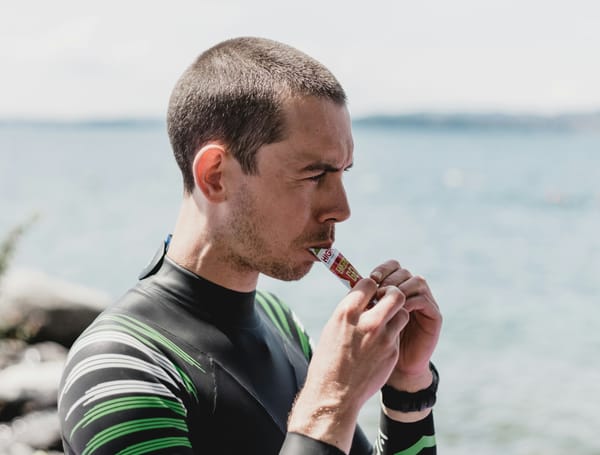Injured? Then Fix Your Muscle Tissue Health
I want to discuss muscle tissue health, because healthy tissue not only allows the body to perform but it keeps the body's biomechanics optimal and pain free. Our ability to move is created from skeletal muscle and the average male is made up of 42% while the average female is made up of 36% o

I want to discuss muscle tissue health because healthy tissue not only allows the body to perform but it keeps the body’s biomechanics optimal and pain-free.
Our ability to move is created from skeletal muscle and the average male is made up of 42% while the average female is made up of 36% of this type of muscle tissue.
There are many things to consider when we think of muscle tissue health, from the basics such as the strength, elasticity and flexibility of the tissue to the more in-depth parts that make up healthy tissue such as Hydration status, Protein turn over rate and Acid-Base Balance to name a few.
Muscular aches and pains occur as muscle loses it flexibility and elasticity and dehydration further compounds these problems as the tissue binds up (meaning the muscles adhere together).
So let me do a quick overview of how you can with some simple daily rituals create healthy muscle tissue that allows pain-free movement and optimal performance.
What makes up good muscle tissue health?
Strength training: As we know strength training provides the stimulus for us to recruit more muscle fibers for a more forceful contraction (better sporting performance), it also provides other overall health benefits such as increased bone, ligament, muscle, tendon strength and resiliency (less potential for injury), and a temporary increase in metabolism (which will help fat loss), improvements in cardiac function and an elevation of HDL (the good cholesterol).
We are able to train strength in the gym or anywhere for that matter with our body weight or more specifically we can train it in our sport. In triathlon we can train strength on the bike by using a bigger gear thus higher resistance and also ultilising hills where you have to overcome gravity. Swimming we can use paddles, bands, towels etc and running we can also use hills.
Incorporating some strength training into your weekly program will see a positive effect in your muscle tissue health.
Elasticity: Without going too in-depth, elasticity is the ability for the muscle to lengthen and rebound to it’s normal state. As your biomechanics break down, so does your body’s muscular structure or elasticity. Also when our muscles loose their elasticity they can become stretched past their capacity which can cause irrevocable damage to the muscle and insertion points.
The goal is to have our muscles resemble a bungee cord which is pliable, flexible and supple as opposed to a rigid rope. One thing to remember is that we cannot stretch a knot out of a rope, but we can knead or massage out the knot!
We can regain muscular elasticity with massage and self massage using our performance tools.
Flexibility: Flexibility doesn’t actually mean stretching! The muscles role is to contract and relax. When we stretch a muscle, we actually loose elasticity in that muscle and that weakens our muscular-skeletal system instead of strengthening it and if done regularly it will have long term effects on our muscle tissue health and not the effects’ we are looking for!
Stretching your own muscles is a direct way to injury and at the minimum muscle soreness.
To gain flexibility or the ability for our joints to bend during movement we need to undo the high levels of muscular/joint tension. We do this by recreating elasticity via compression and force feeding blood flow and nutrients into the muscle.
Hydration: Lean tissue contains about 75% of water by weight, so when we allow ourselves to get dehydrated our muscles start to take on the appearance and function of a piece of beef jerky. Your tissue looses it’s elasticity, it’s suppleness and pliability. This creates pain and also a higher likelihood of tears and muscular dysfunction.
Simply getting hydration under control will not only help eradicate pain but with electrolytes in the mix it will keep your muscles functioning properly and allow the good nutrients into the tissue while flushing the waste toxins out.
Zym have some awesome portable effervescent tablets that you drop into your water, kind of like Beroca but with all the electrolytes we need. Another easy way to get in your required electrolytes is a diet rich in fruits and vegetables. The only thing you need to add, is a little sodium (salt) as fruits and vegetables don’t contain this important electrolyte.
Check your hydration status by checking the colour of your urine. A light shade of yellow and all you need is water, A little darker then get some electrolytes into you. Brown.. well maybe a trip to the doc is in order!
Protein Turnover Rate: What? Basically all our body’s tissue goes through a regular program of turnover. We want to increase our turnover rate because it improves our muscle quality and to do this we need increase both protein synthesis and breakdown. The breakdown occurs in training while a high protein diet will help rid the old bound up tissue quickly and build new healthier tissue in its place.
Acid Base Balance: When we exercise we increase our blood acidity levels or blood acidosis, nothing wrong with that, but did you know that most post session recovery foods we consume are also net acid enhancing. Meaning they increase our blood acidity levels even further.
This is where we can run into some issues in terms of muscle tissue and bone health as this metabolic acidosis creates muscle and bone wastage which will seriously affect performance and health.
The body likes to be in balance and the only way without dietary intervention to reduce blood acidity naturally by the body, is to pull nitrogen out of the muscle tissue and take minerals out of bone i.e. we end up cannibalising our muscles and bones. NOT GOOD! Especially for athlete. There is a quick fix which is to provide our body with net alkaline producing foods that lower our bloods acidosis levels. These foods are simply fruits and vegetables. Add these to your post training recovery mix and you’ll be all good.
Summary
To summarize it quickly and on the simple things you can do to ensure you have good quality muscle tissue is to make sure you stay adequately hydrated. Treat your muscle tissue by giving them some love (daily) with self massage and massage. Increase lean protein in your diet while making sure you get fruits and vegetables in which your processed carb rich foods. Finally make sure you’re doing some sort of strength training in your weekly plan.
Healthy muscle tissue will let you live pain free, while allowing you to get optimal performance. Now who doesn’t want that!





